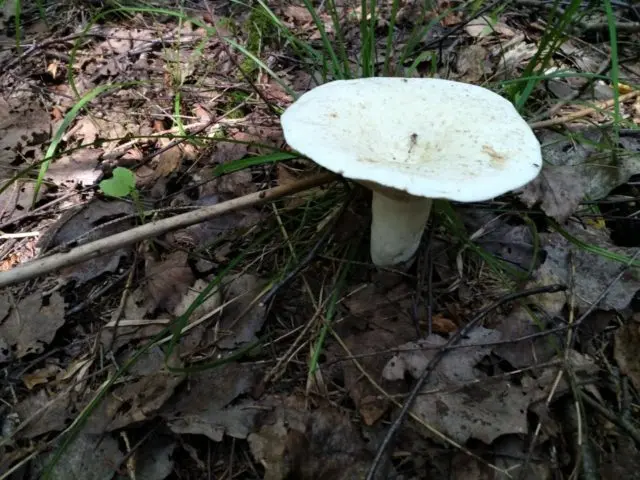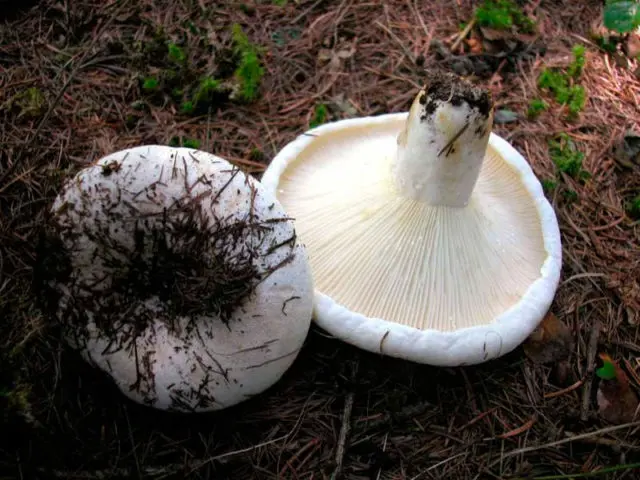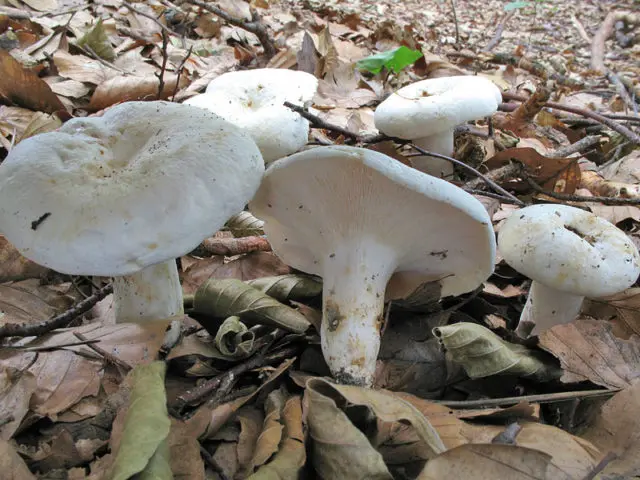Contents
Parchment breast, or milky – a mushroom of the Mlechnikov genus, the Syroezhkov family. In Latin it is called Lactarius pergamenus. It is an independent variety of pepper mushroom. For this reason, it is also called a parchment-pepper load. It is classified as a conditionally edible species. They are eaten in a salty form, and before that they are soaked for a long time to remove bitterness.
Description of parchment
This species got its name because of several features: “breast” – due to the fact that it is most often found in heaps, piles, and parchment – because of the parchment-matte surface of the cap and leg.

Cap Description
The size of a dense, fleshy hat usually reaches 10 cm in diameter. But in some sources there is information that individual specimens grow up to 20 cm. In young mushrooms, the shape of the cap is convex. As it grows, its edges rise more and more upward, a funnel-shaped shape is created. The center is concave. The cap is dry to the touch, may be wrinkled or smooth. The skin color is white, yellowish in adults, sometimes with darker, buffy spots.

Milky parchment refers to agaric mushrooms. It has accreted, narrow, frequent, cream-colored, white, yellowish plates.
The pulp is dense, white. It secretes a large amount of milky juice. It does not change its white color when cut.
Description of the leg
The leg is strong, dense, smooth. Regardless of the degree of maturity of the fruiting body, the leg is always white. Its shape is cylindrical, tapering at the bottom. Height – from 5 to 10 cm. Inside the leg is solid, does not have a characteristic “hole”. She also exudes abundant milky juice. The liquid is very caustic, white in color.

Where and how to grow
The growth area of parchment mushroom is a huge territory of the temperate climate zone from Western Europe to the eastern part of Siberia. The species often grows next to pepper mushrooms. But unlike them, who prefer only mixed forests with a predominance of oaks and birches, the parchment mushroom is found in deciduous and mixed forests. Very rarely it can be found among conifers. It forms mycorrhiza with both deciduous and coniferous plants.
Prefers calcareous soils. Composing extensive colonies, it can endure even drought conditions. Thanks to this feature, it feels comfortable both on open edges and in the thick of the forest.
The fruiting period falls on August – September, often – in very large groups.
Is the mushroom edible or not?
From the point of view of edibility and taste, the species cannot be ranked among first-class mushrooms. Conditionally edible parchment milkers have a bitter aftertaste. To remove it, the pulp is thoroughly soaked. After that, the mushrooms acquire nutritional value, according to their nutritional value they are classified in the fourth category.
Preparing parchment mushrooms for the winter requires compliance with the technology so that bacteria do not get into the jars during salting. Eating a spoiled product is dangerous for the development of botulism.
Twins and their differences
The parchment milker does not have poisonous and inedible counterparts. Outwardly, it shows a very strong resemblance to several species.
Pepper
The similarity is so great that it is considered a variety of pepper mushroom. The latter, however, has several differences:
- smooth, not wrinkled cap surface;
- shorter leg, up to 7 cm;
- staining of the juice on the cut in a yellowish tint, this symptom does not always appear;
- the size of the hat can be much larger, up to 30 cm.

Felt and bluish breast
Other representatives of the Mlechnikov genus similar to parchment mushrooms are felt and bluish mushrooms. The first one is distinguished by the surface of the cap, it is “hairy”. In the second, the juice in the air becomes greenish.


However, even the confusion of these species is not of great importance for the reason that they all belong to the same family and are conditionally edible. You can eat them after proper processing.
Interesting facts about parchment
True lovers of quiet hunting can tell a lot of interesting facts about parchment:
- The species is extremely rare. In the Moscow region, it was even listed in the Red Book.
- It is not easy to study it, not only because it is difficult to detect in the forest, but also because of the similarity with the pepper lactiferous.
- Salted milk mushrooms have useful properties: they relieve inflammation, help with lung diseases, and they are also used in traditional medicine to prevent stone formation in the bladder and gall bladder, in the kidneys.
- Mushrooms are rich in vitamin D, and therefore have a beneficial effect on the immune system, the condition of the skin and hair.
Conclusion
The parchment breast, although it can be found infrequently, and easily confused with relatives, is valued by mushroom pickers because it is almost never affected by worms. And salted milk mushrooms always take pride of place among mushroom preparations for the winter.









